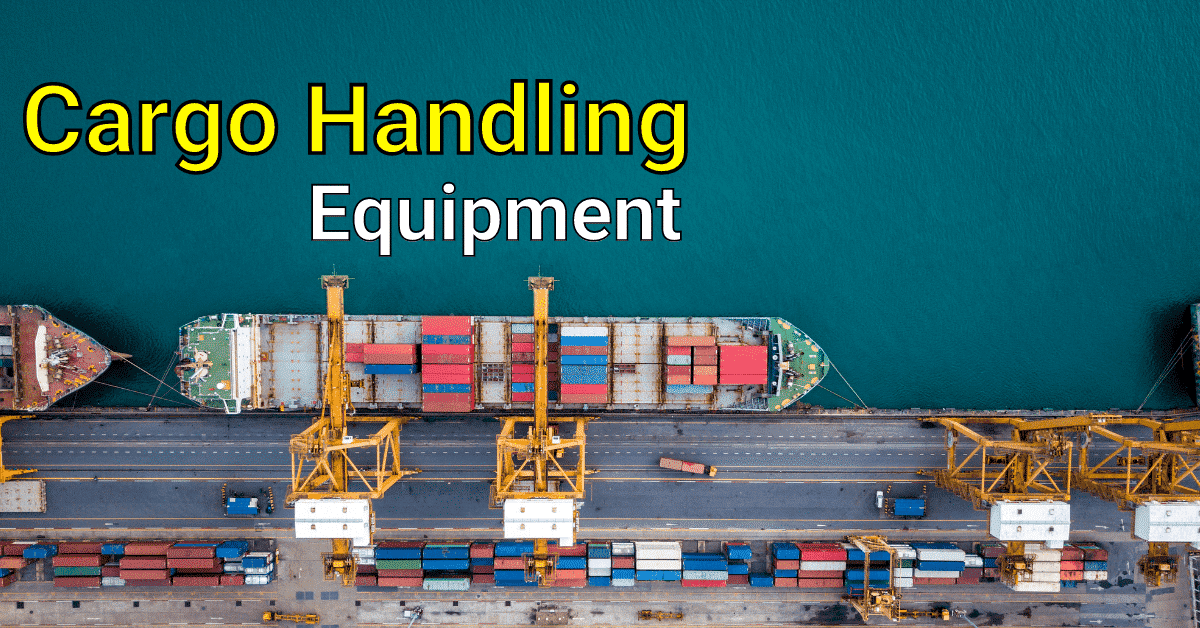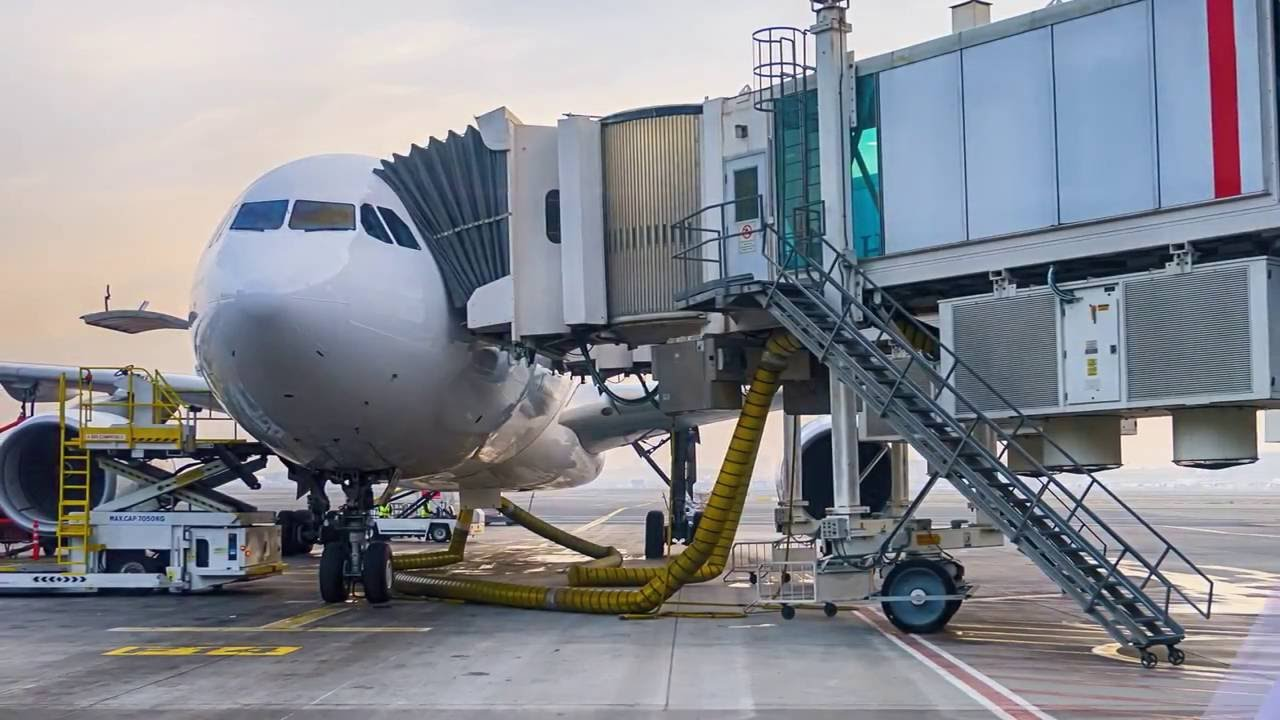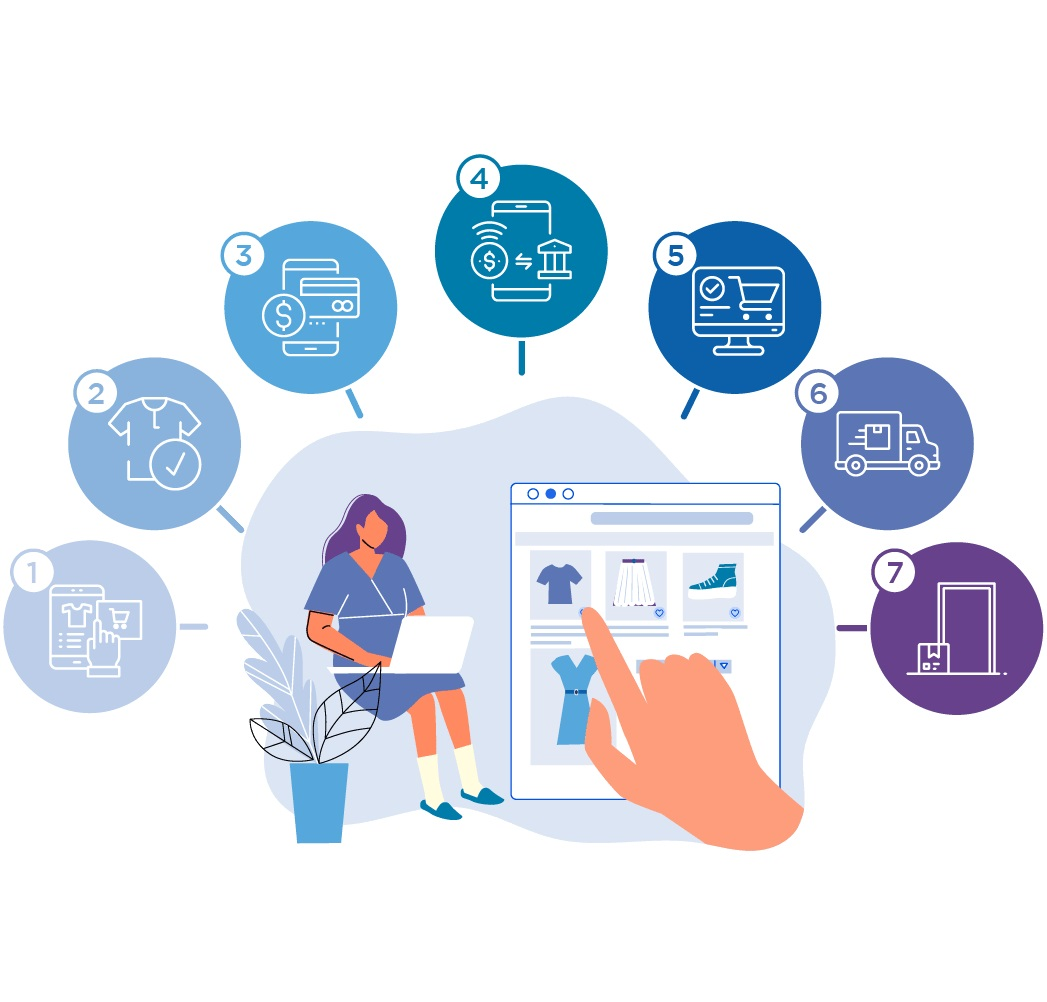Cargo Equipment Handler (1 years diploma)
Cargo Equipment Handler click here
Brief Job Description: Cargo equipment handler operates MHE to move,
load/unload cargo in a port/ CFS/ ICD. S/he also performs basic maintenance of the
MHE equipment
Qualifications Pack for Cargo Equipment Handler

Elective 1: Rail Mounted Quay (RMQ) Crane
The unit is about operating Rail Mounted Quay (RMQ) crane at a port terminal,
CFS and ICD
Elective 2: Grab Ship Unloader (GSU) Crane
The unit is about operating Grab Ship Unloader (GSU) crane at a port terminal,
CFS and ICD
Elective 3: Rubber Tyre Gantry (RTG) Crane
The unit is about operating Rubber Tyre Gantry (RTG) crane at a port terminal,
CFS and ICD
Elective 4: Reach Stacker
The unit is about operating Reach stacker at a port terminal, CFS and ICD
Option
Option 1: Yard and Cargo Handling
The unit is about planning yard for cargo operations at port, CFS and ICD
Personal Attributes: The job holder should be physically fit, judge distance and
should have good eye-hand-foot coordination to drive MHE continuously for
long hours. S/He must be able to prioritize and execute tasks within scheduled
time limits. S/he should have English and Vernacular language proficiency,
demonstrable in all written and oral communication
Description
Core Skills/Generic
Skills
Core Skills or Generic Skills are a group of skills that are key to learning and
working in today’s world. These skills are typically needed in any work
environment. In the context of the NOS, these include communication related
skills that are applicable to most job roles.
Function
Function is an activity necessary for achieving the key purpose of the sector,
occupation, or area of work, which can be carried out by a person or a group
of persons. Functions are identified through functional analysis and form the
basis of NOS.
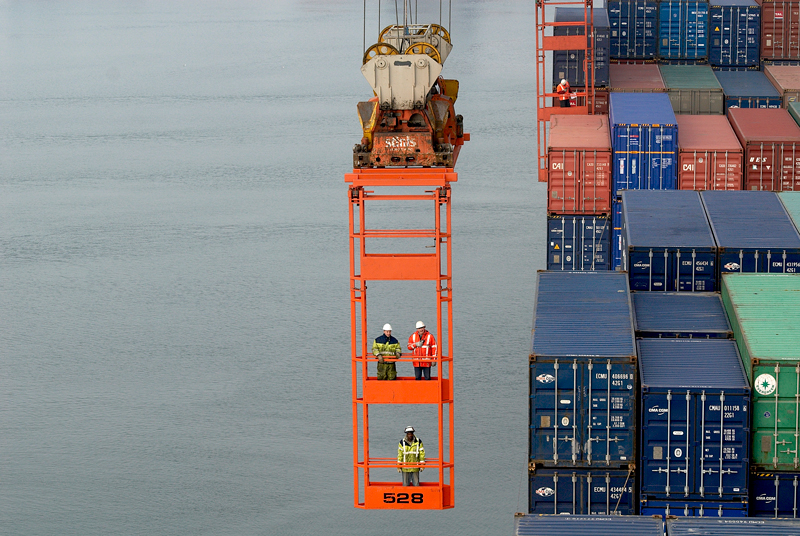
Job role Job role defines a unique set of functions that together form a unique
employment opportunity in an organization.
Knowledge and
Understanding
Knowledge and understanding are statements which together specify the
technical, generic, professional and organizational specific knowledge that an
individual need in order to perform to the required standard.
National Occupational
Standards (NOS) NOS are Occupational Standards which apply uniquely in the Indian context
Occupation Occupation is a set of job roles, which perform similar/related set of functions
in an industry.
Organisational Context
Organisational Context includes the way the organization is structured and
how it operates, including the extent of operative knowledge managers have
of their relevant areas of responsibility.
Performance Criteria Performance Criteria are statements that together specify the standard of
performance required when carrying out a task.
Qualifications Pack
(QP)
Qualifications Pack comprises the set of NOS, together with the educational,
training and other criteria required to perform a job role. A Qualifications
Pack is assigned a unique qualification pack code.
Qualifications Pack
Code
Qualifications Pack Code is a unique reference code that identifies a
qualifications pack.
Electives
Electives are NOS/set of NOS that are identified by the sector as contributive
to specialization in a job role. There may be multiple electives within a QP for
each specialized job role. Trainees must select at least one elective for the
successful completion of a QP with Electives.
Options
Options are NOS/set of NOS that are identified by the sector as additional
skills. There may be multiple options within a QP. It is not mandatory to select
any of the options to complete a QP with Options.
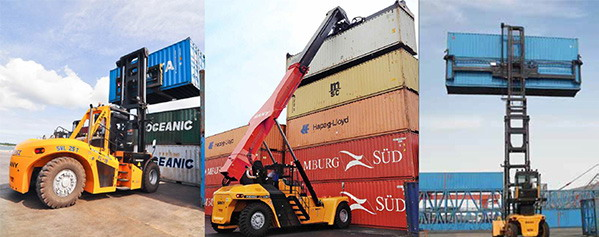
Unit Code Unit code is a unique identifier for an Occupational Standard, which is
denoted by an ‘N
Unit Title Unit title gives a clear overall statement about what the incumbent should be
able to do
Description Description gives a short summary of the unit content. This would be helpful
to anyone searching on a database to verify that this is the appropriate OS
they are looking for.
Scope
Scope is the set of statements specifying the range of variables that an
individual may have to deal with in carrying out the function which have a
critical impact on the quality of performance required.
Sector
Sector is a conglomeration of different business operations having similar
businesses and interests. It may also be defined as a distinct subset of the
economy whose components share similar characteristics and interests.
Sub-Sector Sub-sector is derived from a further breakdown based on the characteristics
and interests of its components.
Sub-functions Sub-functions are sub-activities essential to fulfil the achieving the objectives
of the function.
Technical Knowledge Technical Knowledge is the specific knowledge needed to accomplish specific
designated responsibilities.
Description
3PL Third Party Logistics
CFS Container Freight Stations
DC Delivery Centre
ERP Enterprise Resource Planning
GSU Grab Ship Unloader
HO Head Office
HR Human Resources
ICD Inland Container Depots
IMDG International Maritime Dangerous Goods
ISCO International Standard Classification of Occupations
MHEs Material Handling Equipment
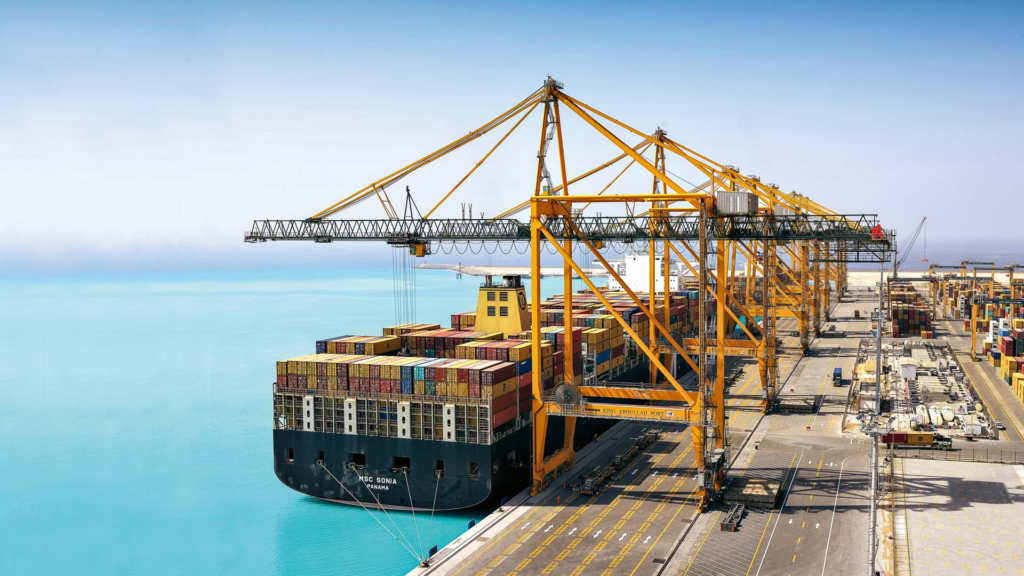
NCO National Classification of Occupations
NOS National Occupational Standards
NSQF National Skills Qualifications Framework
NSQC National Skills Qualifications Committee
OH&S Occupational Health and Safety
OS Occupational Standards
OSHA Occupational Safety and Health Administration
PC Performance Criteria
PO Purchase Order
PPE Personal Protective Equipment
QP Qualification Pack
RFID Radio-Frequency Identification
RMQ Rail Mounted Quay
RTG Rubber Tyre Gantry
SOP Standard operating procedures
SSC Sector Skill Council
SWL Safe Working Load
TAT Turnaround time
VHF Very High Frequency
WLL Working Load Limit
Perform cargo handling at port
Description This unit is about preparing and performing mechanised cargo handling at ports
Scope This unit/task covers the following:
• Obtain information and inspect condition of equipment
• Operate crane/ Material Handling Equipment (MHE)
• Report and document
Range: MHE equipment, Personal Protective Equipment (PPE), Standard operating
procedures (SOP), computer, projector, worksheets, etc.
Performance Criteria (PC) w.r.t. the Scope
Element Performance Criteria
Obtain information
and inspect condition
of equipment
To be competent, the user/individual on the job must be able to:
PC1. obtain details of cargo to be loaded/ unloaded, deck and yard layout and any
other specific instruction from the yard supervisor
PC2. engage with the ship and yard supervisor and the rigging staff, and finalise
the type of crane to use and techniques for lifting
PC3. finalise the path for movement of the cargo in coordination with lifting
supervisor, yard supervisor and rigging staff
PC4. wear the required PPEs and carry the communication device
PC5. check the crane/ MHE’s controls for fitness of operation including breaking
tests, boom operation, spreader movement
PC6. test drive the trolley and check that all hydraulic systems to operate hoisting
system, flippers, and emergency controls etc. before operation

PC7. escalate any issues to the supervisor
Operate crane/ MHE To be competent, the user/ individual must be able to:
PC8. check for clear visibility from the control unit platform, to vessel, yard and the
spreaders
PC9. check for weather condition and factor those in while operations
PC10. follow the SOP during the cargo handling process
PC11. follow the hand signals and Very High Frequency (VHF) communications from
the signalman to move the crane and cargo
PC12. place cargo/ container at the assigned location in coordination with the
instruction of the signalman to ensure zero damage
PC13. verify that the containers are properly locked before moving, based on
system input and rigger confirmation
PC14. monitor the container and spreader movement during operations, to ensure
safe limits
PC15. take necessary precautions while handling dangerous and hazardous goods
Report and
document
To be competent, the user/ individual must be able to:
PC16. fill the post operation checklist on completion of activity
PC17. report on delays, damages, accidents and other incidents to the supervisor
and prepare necessary documentation for insurance claims if any
PC18. report on the condition of the crane/ MHE and any maintenance activity or
replacement that may be required to the supervisor
Knowledge and Understanding (K)
A. Organizational
Context
(Knowledge of the
company /
organization and
its processes)
The individual on the job needs to know:
KA1. types of documentation used in organization and importance of the same
KA2. risk and impact of not following defined procedures/work instructions
KA3. records to be maintained and implications of non-maintenance of the same
KA4. knowledge of security procedures e.g. secure storage of inventory
KA5. rules and regulations of shop floor as per standard operating procedure (SOP)
KA6. risk and impact of not following safety procedures
KA7. escalation matrix for reporting identified problems
KA8. cost of equipment and loss for the company that results from damage of
equipment
KA9. implications of delays in process to the company
B. Technical Knowledge
The individual on the job needs to know:
KB1. appropriate crane to be used based on cargo type
KB2. controls and switches used to operate the crane/MHE
KB3. basic technicalities associated with the MHE
KB4. various signs and signals used for operations and emergencies at the port
KB5. SOP for handling hazardous goods
KB6. response to emergencies e.g. fire
KB7. pre-operation checklist and post operation checklists
KB8. safety regulations while operating the crane/MHE
KB9. optimal working condition at the port and various precautions to be taken
because of weather
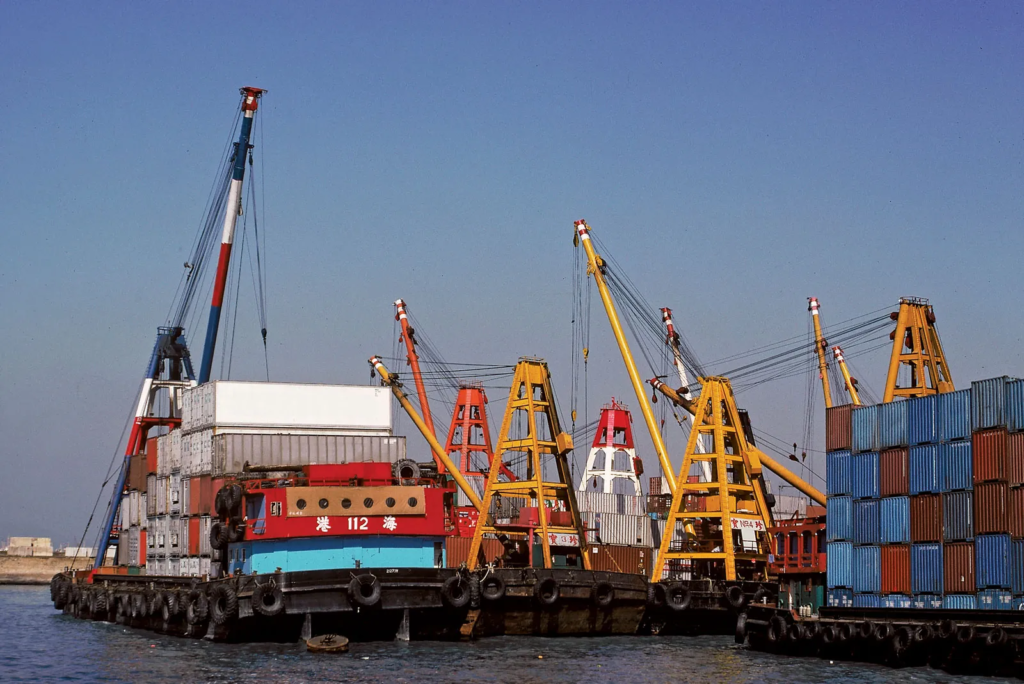
KB10. the control systems, greasing and other technical requirement for the crane/
MHE
KB11. various crane/ MHE components and their functions
KB12. how to test and safely carry out maintenance tasks on the crane/MHE
KB13. how to identify deviations from normal operations
KB14. basic of port and yard layouts
KB15. type of vessels and SOPs for cargo movement in each type
Skills (S)
A. Core Skills/
Generic Skills
Reading Skills
The user/individual on the job needs to know how to read:
SA1. labels and codes as per company procedures
SA2. various signals and flags in port and vessel operations
SA3. handling instructions/company log books and records
SA4. SOPs and safety manuals and safety signs at the port
SA5. instructions and orders
SA6. cargo stowage plans
Writing Skills
The user/individual on the job needs to know how to:
SA7. fill out checklists, maintenance logbooks detailing maintenance activities
conducted
SA8. prepare detailed technical reports
SA9. note down condition of crane/MHE and any maintenance or repair that was
carried out on a daily basis
SA10.fill out any complaint/ insurance related forms for damaged goods
Oral Communication (Listening and Speaking skills)
The user/individual on the job needs to know how to:
SA11. communicate clearly with supervisors and ground staff
SA12. communicate over VHF and through hand and flag signals
SA13. provide advice and guidance to peers and juniors
B. Professional Skills Decision Making
The user/individual on the job needs to know how to:
SB1. decide if the weather conditions are appropriate for operations
SB2. decide if the crane/ MHE is in functional condition based on pre-operative
checks
SB3. decide the power required to move cargo based on weight and size of cargo
SB4. decide the appropriate route for movement of cargo

Plan and Organize
The user/individual on the job needs to know how to:
SB5. adjust according to volume, capacity and manpower needs during peak and
non-peak hours
SB6. clearly coordinate with ground staff for smooth operations
SB7. prioritize and execute tasks within the scheduled time limits
SB8. maintain schedules and punctuality
SB9. avoid absenteeism
SB10. be a team player and achieve joint goals.
Customer Centricity
The user/individual on the job needs to know how to:
SB11. adhere to the timelines and ensure that they are met
SB12. handle the cargo/ containers with proper care so as to avoid damage or
spillage while moving
Problem Solving
The user/individual on the job needs to know how to:
SB13. handle difficult weather conditions by making appropriate adjustment for
operations
SB14. resolve basic technical issues with the equipment through preventive and
first-line maintenance
Analytical Thinking
The user/individual on the job needs to know how to:
SB15. suggest methods to streamline pick and drop operations
SB16. assess the condition of crane and suggest for maintenance/ servicing if
required
Critical Thinking
The user/individual on the job needs to know how to:
SB17. clearly follow instructions and coordinate with ground staff
SB18. take go-aheads/ green signals from ground staff before moving cargo using
crane/ MHE
SB19. identify the area of operation and take necessary precautions
Perform preventive & first-line maintenance of MHE at ports
Description This unit is about performing preventive and first-line maintenance checks for cranes/
MHEs in port operations
Scope This unit/task covers the following:
• Perform preventive maintenance
• Perform first-line maintenance
Range: Material Handling Equipment (MHE) equipment, Personal Protective
Equipment (PPE), tools, tackles, Standard operating procedures (SOP), computer,
projector, worksheets, etc.
Performance Criteria (PC) w.r.t. the Scope
Element Performance Criteria
Perform preventive
maintenance
To be competent, the user/ individual must be able to:
PC1. perform preventive maintenance for faults like fractures, corrosion, missing
paint, etc. on the body of the crane/ MHE as per schedule in accordance to
checklist
PC2. test the crane/ MHE for all controls as per the checklist to see that it is fully
functional and safe for use
PC3. update maintenance card and report
PC4. report to supervisors and request technical support in case of any
abnormalities in operation, damage, repair requirement, etc.
Perform first-line maintenance
To be competent, the user/ individual must be able to:
PC5. lookout for basic aberrations such as irregular noise, blockages, error in
operations, and identify the source of issue
PC6. perform basic first-line repairs like greasing, painting, oiling, removing of
stuck objects, changing of fuse, making severed electrical connections, etc.
and check if the problem is resolved
PC7. check the parts to assess damage, repair requirements, electrical faults, faulty
control systems, etc.
PC8. escalate the problems to supervisor and request technical support if required
Knowledge and Understanding (K)
A. Organizational
Context
(Knowledge of the
company
organization and
its processes)
The individual on the job needs to know:
KA1. types of documentation used in organization and importance of the same
KA2. risk and impact of not following defined procedures/work instructions
KA3. records to be maintained and implications of non-maintenance of the same
KA4. knowledge of security procedures e.g. secure storage of inventory
KA5. rules and regulations of shop floor as per standard operating procedure (SOP)
KA6. risk and impact of not following safety procedures
KA7. escalation matrix for reporting identified problems
KA8. cost of equipment and loss for the company that results from damage of
equipment
KA9. implications of delays in process to the company
B. Technical Knowledge
The individual on the job needs to know:
KB1. controls and switches used to operate the crane/MHE
KB2. basic technicalities associated with the MHE
KB3. various signs and signals used for operations and emergencies at the port
KB4. sops for handling hazardous goods
KB5. response to emergencies e.g. fire
KB6. pre-operation checklist and post operation checklists such as,
a. check for accidental damages on the body of the MHE
b. check that the spreader, quay, control unit, etc. are operating as per the
specified norms
c. check for any irregular noise during operation and troubleshoot
d. check that all controls and communication systems are functional
e. check for damage in tyres, rails, parking break, main horn, reverse horn,
warning lamp, etc.
f. check fluid levels of engine, transmission, differential, hydraulic, radiator
coolant and brake oil and top up any fluids as required.
g. identify any requirement for painting, greasing, welding, part
replacement, etc. to the supervisor
KB7. safety regulations while operating the crane/MHE
KB8. optimal working condition at the port and various precautions to be taken
because of weather
KB9. the control systems, greasing and other technical requirement for the crane/
MHE
KB10. various crane/ MHE components and their functions
KB11. how to test and safely carry out maintenance tasks on the crane/MHE
KB12. how to identify deviations from normal operations
KB13. basic of port and yard layouts
KB14. type of vessels and sops for cargo movement in each type
Skills (S)
C. Core Skills/
Generic Skills
Reading Skills
The user/individual on the job needs to know how to read:
SA1. labels and codes as per company procedures
SA2. various signals and flags in port and vessel operations
SA3. handling instructions/company log books and records
SA4. SOPs and safety manuals and safety signs at the port
SA5. instructions and orders
SA6. cargo stowage plans
Writing Skills
The user/individual on the job needs to know how to:
SA7. fill out checklists, maintenance logbooks detailing maintenance activities
conducted
SA8. prepare detailed technical reports
SA9. note down condition of crane/MHE and any maintenance or repair that was
carried out on a daily basis
SA10. fill out any complaint/ insurance related forms for damaged goods
Oral Communication (Listening and Speaking skills)
The user/individual on the job needs to know how to:
SA11. communicate clearly with supervisors and ground staff
SA12. communicate over VHF and through hand and flag signals
SA13. provide advice and guidance to peers and juniors
D. Professional Skills Decision Making
The user/individual on the job needs to know how to:
SB1. decide if the weather conditions are appropriate for operations
SB2. decide if the crane/ MHE is in functional condition based on pre-operative
checks
SB3. decide the power required to move cargo based on weight and size of cargo
SB4. decide the appropriate route for movement of cargo
Plan and Organize
The user/individual on the job needs to know how to:
SB5. adjust according to volume, capacity and manpower needs during peak and
non-peak hours
SB6. clearly coordinate with ground staff for smooth operations
SB7. prioritize and execute tasks within the scheduled time limits
SB8. maintain schedules and punctuality
SB9. avoid absenteeism
SB10. be a team player and achieve joint goals
Customer Centricity
The user/individual on the job needs to know how to:
SB11. adhere to the timelines and ensure that they are met
SB12. handle the cargo/ containers with proper care so as to avoid damage or
spillage while moving
Problem Solving
The user/individual on the job needs to know how to:
SB13. handle difficult weather conditions by making appropriate adjustment for
operations
SB14. resolve basic technical issues with the equipment through preventive and
first-line maintenance
Analytical Thinking
The user/individual on the job needs to know how to:
SB15. suggest methods to streamline pick and drop operations
SB16. assess the condition of crane and suggest for maintenance/ servicing if
required

Critical Thinking
The user/individual on the job needs to know how to:
SB17. clearly follow instructions and coordinate with ground staff
SB18. take go-aheads/ green signals from ground staff before moving cargo using
crane/ MHE
SB19. identify the area of operation and take necessary precautions
Maintain integrity, and ethics in operations
Description This Occupational Standards (OS) unit is about maintaining integrity, ensuring data
security, and practicing ethical behaviour
Scope This unit/task covers the following:
• Maintain integrity and ensure data security
• Practice ethical and professional behaviour
• Ensure regulatory compliance
Range: Standard operating procedures (SOP), worksheets, computer, projector,
stationery etc.
Performance Criteria (PC) w.r.t. the Scope
Element Performance Criteria
Maintain integrity
ensuring data
security
To be competent, the user/ individual must be able to:
PC1. refrain from indulging in corrupt practices
PC2. avoid using company’s funds, property or resources for undertaking personal
activities
PC3. protect customer’s information and ensure it is not misused
PC4. protect data and information related to business or commercial decisions
Practice ethical and
professional
behavior
To be competent, the user/ individual must be able to:
PC5. avoid acceptance of cash or kind from vendors for support or contract
negotiations
PC6. demonstrate and practice ethics in day-to-day processes and dealings with
customers and colleagues
PC7. avoid nepotism
PC8. consult supervisor or senior management when in situations that may require
differentiating between ethical and unethical
PC9. report promptly all violations of code of ethics
PC10. dress up and conduct in a professional manner
PC11. communicate with clients and stakeholders in a soft and polite manner
PC12. follow etiquettes in accordance to the place
Ensure regulatory compliance
To be competent, the user/ individual must be able to:
PC13. check for regulatory documentation and compliances for the shop floor as per
information from the supervisor
PC14. perform activities considering the regulatory requirements
PC15. use PPEs in accordance to regulatory requirements
PC16. identify the different types of dangerous goods and handling methodologies
PC17. follow the SOP for handling of different types of dangerous goods
PC18. consult supervisor or senior management when in situations that may require differentiating between ethical and unethical
PC19. promptly report all regulatory violations
Knowledge and understanding (K)
A. Organizational
Context
(Knowledge of the
company /
organization and
its processes)
The user/individual on the job needs to know:
KA1. company’s policies on use of language
KA2. company’s Human Resources policies
KA3. company’s code of ethics
KA4. company’s whistle blower policy
KA5. company’s rules related to sexual harassment
KA6. company’s reporting structure
KA7. company’s documentation policy
B. Technical Knowledge
The user/individual on the job needs to know and have:
KB1. principles of code of ethics and business ethics
KB2. understanding of various regulatory requirements
KB3. understanding of documentary compliance for various regulations
KB4. understanding of different dangerous goods
KB5. understanding regulations w.r.t dangerous goods
Skills (S)
A. Core Skills/
Generic Skills
Reading Skills
The individual on the job needs to know how to:
SA1. read company policy documents and work-related documents
SA2. read emails and notifications
Writing Skills
The individual on the job needs to know how to:
SA3. fill up documentation pertaining to job requirement
SA4. make reports regarding breach of ethics, regulations
Oral Communication (Listening and Speaking skills)
The individual on the job needs to know how to:
SA5. interact with team members to work efficiently
SA6. communicate with peers and supervisors about information security and
building trust
B. Professional Skills
Decision Making
The individual on the job needs to know how to:
SB1. identifying a good as dangerous goods
SB2. assessing if the situation has to be reported regarding regulations
Plan and Organize
The individual on the job needs to know how to:
SB3. plan and organise activities as per company’s guidelines, if any violation of
code of ethics is noticed in the company
Customer Centricity
The individual on the job needs to know how to:
SB4. prevent company and customer information leakage
Problem Solving
The individual on the job needs to know how to:
SB5. provide proper advice or guidance to colleagues to deal with sensitive issue in
their department or company
Analytical Thinking
The individual on the job needs to know how to:
SB6. provide professional services diligently and with integrity
Critical Thinking
The individual on the job needs to know how to:
SB7. avoid defaming company’s name by indulging into pilferage or fiddling with
quality or quantity of shipment
SB8. be fair and reasonable in profession and disclose conflict of interests
Follow health, safety and security procedures
Description This Occupational Standards (OS) unit is about ensuring compliance with health, safety
and security procedures at the workplace
Scope This unit/task covers the following:
• Follow health, safety and security procedures
• Ensure compliance to health, safety and security
Range: Standard operating procedures (SOP), worksheets, computer, projector,
stationery etc.
Performance Criteria (PC) w.r.t. the Scope
Element Performance Criteria
Follow health, safety
and security
procedures
To be competent, the user/ individual must be able to:
PC1. make note of all safety processes in different location (cargo loading area,
ramp operation area, etc.) with reference to area of operation
PC2. wear all personal protective equipment (PPE) such as goggles, ear plugs,
helmet, mask, shoes, etc. as applicable in the cargo movement area
PC3. follow standard driving practice to ensure safety of life and material
PC4. follow organizational protocol to deploy action in case of signs of any
emergency situation or accident or breach of safety
PC5. undertake periodical preventive health check ups
PC6. follow necessary SOP and precautions while handling dangerous and
hazardous goods
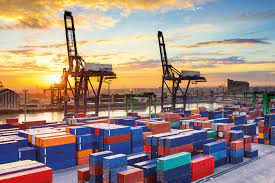
PC7. follow security procedures like green gate in port, customs area, factory
security, etc.
PC8. comply with data safety regulations of the organisation
PC9. follow standard safety procedures while handling hazardous / fragile cargo
and walk only on the designated pathway
Ensure compliance to health, safety and security
To be competent, the user/ individual must be able to:
PC10. recognise unsafe conditions and safety practices at the workplace and report
it to concerned authority
PC11. inspect the activity area and equipment for appropriate and safe condition
PC12. check if stacking is done at defined height and is not on the walk way
PC13. check if walk way is free from grease/ oil
PC14. check if emergency fire alarms, water sprinklers and smoke detectors are
installed at all places
PC15. participate in fire drills
PC16. check if standard material handling procedure are being followed
PC17. check if hold ladders, platforms and hand rails to be in a sound and safe condition
PC18. check if all the safety and security related tags, labels and signage are placed
in the cargo
PC19. check if loading instrument is certified and operational
PC20. implement 5S at workplace
PC21. check if cargo has passed security checks and report in case of any violation
Knowledge and Understanding (K)
A. Organizational
Context
(Knowledge of the
company /
organization and
its processes)
The individual on the job needs to know:
KA1. health, safety and security policies and procedures
KA2. special instructions for hazardous cargo handling
KA3. defined standard operating procedures
KA4. risk and impact of not following defined procedures/work instructions with
reference to health, safety and security operations
KA5. escalation matrix for reporting identified problem
B. Technical Knowledge
The individual on the job needs to know:
KB1. basics of Occupational Safety and Health Administration (OSHA)
KB2. 5S implementation and practice
KB3. necessary security procedures for airport, customs area, etc.
KB4. tools and equipment for material handling
KB5. standard material handling procedures while handling cargo
KB6. safety and security signage, labels, etc. and their functions
KB7. handling procedure for hazardous / fragile cargo
KB8. security procedures and SOPs for dangerous / hazardous goods
KB9. different personal protective equipment (PPE), their usage and purpose
KB10. safe driving techniques
Skills (S)
A. Core Skills/
Generic Skills
Reading Skills
The user/individual on the job needs to know how to read:
SA1. various procedures and standards related to health, safety and security while
performing ground operations and handling cargo
SA2. various documents related to security and movement of cargo at various
location as applicable
Writing Skills
The user/individual on the job needs to know how to:
SA3. fill forms related to health, safety and security procedures wherever
applicable
Oral Communication (Listening and Speaking skills)
The user/individual on the job needs to know how to:
SA4. communicate clearly with colleagues regarding safety procedures
SA5. share experience and provide guidance to peers
B. Professional Skills Decision Making
The user/individual on the job needs to know how to:
SB1. identify the item as damaged or not
SB2. decide if a problem can be resolved quickly or needs to be escalated
SB3. identify activities or orders that need to be prioritized as per instructions
Plan and Organize
The user/individual on the job needs to know how to:
SB4. plan and estimate the time for each activity.
SB5. maintain punctuality and avoid absenteeism
SB6. respond to the supervisor in a timely manner
SB7. prioritize and execute tasks based on instructions
Customer Centricity
The user/individual on the job needs to know:
SB8. importance of customer timelines
SB9. urgency of customer as per instructions
Problem Solving
The user/individual on the job needs to know how to:
SB10. identify trends/common causes for delays, issue in picking, packing and
kitting and resolve the same with supervisor
Analytical Thinking
The user/individual on the job needs to know how to:
SB11. verify the authenticity of the product by looking at the logo, box packaging,
etc.
SB12. verify if the product is damaged or contaminated and report to supervisor
Critical Thinking
The user/individual on the job needs to know how to:
SB13. identify contaminated and products requiring extreme caution and ensure
that requisite precautions are taken
SB14. focus on task at hand and complete it without errors and delays while
maintaining high efficiency and effectiveness
Operate Rail mounted quay (RMQ) crane
Description This unit is about operating Rail mounted quay (RMQ) crane for loading/unloading/
movement of cargo/ container
Scope This unit/task covers the following:
• Operate RMQ crane
Range: RMQ crane, tools and tackles, Standard operating procedures (SOP), computer,
projector, worksheets, stationery, etc.
Performance Criteria (PC) w.r.t. the Scope
Element Performance Criteria
Operate RMQ crane To be competent, the user/ individual must be able to:
PC1. ensure the rail lines of the crane are clear from any obstruction
PC2. check elevating work platform for damages of defects as per SOP
PC3. check for clear visibility of quay, containers, vessel and ground movement
PC4. establish clear communication lines and inform the signalman regarding blind
spots
PC5. select appropriate lifting gear/equipment including slings, ropes, shackles, eye
bolts, and spreaders based on safety charts for safe working load
(SWL)/working load limit (WLL), and assemble and check them for
serviceability
PC6. ensure appropriate hazard prevention/control measures have been taken
PC7. start and operate the RMQ crane as per the defiend SOP
PC8. move the crane to the desired location and identify the correct
lifting/anchorage points
PC9. set spreader to the desired location, set the width as per requirement for
picking one or mutiple containers
PC10. confirm the spreader is locked before movement, lift the load and check it is
approriately rigged and secured
PC11. move the cargo as per plan and as per direction from signalman
PC12. monitor operations on screen controlling the speed of the quay and trolley
PC13. place the cargo/ container at the destination coordinates consdering the
speed and wind effect to avoid any damage
PC14. ensure slinging attachments are released from load without damage to
personnel or workspace
PC15. take neccesary precuations while handing hazardous goods
PC16. load the cargo as per the cargo stowage plan in coordination with signalman
PC17. conduct post operations check for the RMQ crane as per SOP
PC18. egress from elevated platform and shutdown platform as per SOP
PC19. record and report any damages, incidents, equipment failure, and other
necessary information as per SOP
Knowledge and Understanding (K)
A. Organizational
Context
(Knowledge of the
company /
organization and
its processes)
The individual on the job needs to know:
KA1. types of documentation used in organization and importance of the same
KA2. risk and impact of not following defined procedures/work instructions
KA3. records to be maintained and implications of non-maintenance of the same
KA4. knowledge of security procedures e.g. secure storage of inventory
KA5. rules and regulations of shop floor as per standard operating procedure (SOP)
KA6. risk and impact of not following safety procedures
KA7. escalation matrix for reporting identified problems
KA8. cost of equipment and loss for the company that results from damage of
equipment
KA9. implications of delays in process to the company
B. Technical
Knowledge
The individual on the job needs to know:
KB1. controls and switches used to operate the RMQ crane/MHE
KB2. basic technicalities associated with the RMQ crane
KB3. various signs and signals used for operations and emergencies at the port
KB4. SOPs for handling hazardous goods
KB5. response to emergencies e.g. fire
KB6. pre-operation checklist and post operation checklists
KB7. safety regulations while operating the crane/MHE
KB8. optimal working condition at the port and various precautions to be taken
because of weather
KB9. the control systems, greasing and other technical requirement for the RMQ
crane
KB10. various RMQ crane components and their functions
KB11. how to test and safely carry out maintenance tasks on the crane/ Material
Handling Equipment (MHE)
KB12. how to identify deviations from normal operations
KB13. basic of port and yard layouts
KB14. type of vessels and sops for cargo movement in each type
Skills (S)
A. Core Skills/
Generic Skills
Reading Skills
The user/individual on the job needs to know how to read:
SA1. labels and codes as per company procedures
SA2. various signals and flags in port and vessel operations
SA3. handling instructions/company log books and records
SA4. SOPs and safety manuals and safety signs at the port
SA5. instructions and orders
SA6. cargo stowage plans
Writing Skills
The user/individual on the job needs to know how to:
SA7. fill out checklists, maintenance logbooks detailing maintenance activities
conducted
SA8. prepare detailed technical reports
SA9. note down condition of crane/MHE and any maintenance or repair that was
carried out on a daily basis
SA10. fill out any complaint/ insurance related forms for damaged goods
Oral Communication (Listening and Speaking skills)
The user/individual on the job needs to know how to:
SA11. communicate clearly with supervisors and ground staff
SA12. communicate over Very High Frequency (VHF) and through hand and flag
signals
SA13. provide advice and guidance to peers and juniors
B. Professional Skills Decision Making
The user/individual on the job needs to know how to:
SB1. decide if the weather conditions are appropriate for operations
SB2. decide if the crane/ MHE is in functional condition based on pre-operative
checks
SB3. decide the power required to move cargo based on weight and size of cargo
SB4. decide the appropriate route for movement of cargo
Plan and Organize
The user/individual on the job needs to know how to:
SB5. adjust according to volume, capacity and manpower needs during peak and
non-peak hours
SB6. clearly coordinate with ground staff for smooth operations
SB7. prioritize and execute tasks within the scheduled time limits
SB8. maintain schedules and punctuality
SB9. avoid absenteeism
SB10. be a team player and achieve joint goals
Customer Centricity
The user/individual on the job needs to know how to:
SB11. adhere to the timelines and ensure that they are met
SB12. handle the cargo/ containers with proper care so as to avoid damage or spillage
while moving
Problem Solving
The user/individual on the job needs to know how to:
SB13. handle difficult weather conditions by making appropriate adjustment for
operations
SB14. resolve basic technical issues with the equipment through preventive and
first-line maintenance
Analytical Thinking
The user/individual on the job needs to know how to:
SB15. suggest methods to streamline pick and drop operations
SB16. assess the condition of crane and suggest for maintenance/ servicing if
required
Critical Thinking
The user/individual on the job needs to know how to:
SB17. clearly follow instructions and coordinate with ground staff
SB18. take go-aheads/ green signals from ground staff before moving cargo using
crane/ MHE
SB19. identify the area of operation and take necessary precautions

